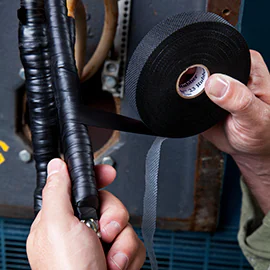Understanding Insulating Strips Importance, Types, and Applications
Insulating strips are critical components used in various industrial and residential applications to prevent the flow of electric current and protect against accidental contact with conductive materials. These strips, often made from materials with high dielectric strength, serve as barriers to electrical insulation, ensuring the safety and effectiveness of electrical systems.
What Are Insulating Strips?
Insulating strips are narrow bands of insulating materials that can be used in a variety of settings. Their primary role is to provide electrical insulation, which is crucial in preventing short circuits and electrical shocks. These strips can be made from several materials, including rubber, PVC (polyvinyl chloride), silicone, and various composite materials, each offering unique properties suitable for different applications.
Importance of Insulating Strips
The significance of insulating strips cannot be overstated. In electrical engineering, insulation is vital for safeguarding both equipment and individuals. Insulating strips are particularly important in the following aspects
1. Safety By providing a physical barrier between conductive surfaces, insulating strips help prevent accidental contact that could lead to electrical shocks, thereby ensuring user safety.
2. Equipment Protection Insulating strips protect sensitive electrical components from exposure to moisture, dust, and other environmental factors that could lead to degradation and potential failure.
3. Effective Signal Transmission In electronic devices, insulating strips help maintain the integrity of signals by preventing interference from neighboring components, thereby enhancing overall performance.
4. Heat Resistance Certains insulating materials can withstand high temperatures, making them suitable for applications in high-heat environments, such as in motors and other machinery.
Types of Insulating Strips
Insulating strips come in various types, each tailored for specific applications
insulating strip

1. Rubber Strips Commonly used due to their excellent flexibility and resistance to aging. Rubber strips are ideal for environments where wear and tear are expected.
2. PVC Strips These are economical and widely used for general-purpose insulation. PVC strips are resistant to chemicals and can be used in various indoor and outdoor applications.
3. Silicone Strips Known for their high-temperature resistance, silicone strips are used in applications where heat build-up is a concern. They maintain their elasticity over a wide range of temperatures.
4. Fiberglass Strips These offer exceptional insulation properties and heat resistance, making them suitable for high-voltage applications.
Applications of Insulating Strips
Insulating strips are utilized across numerous sectors
- Electrical Wiring In homes and commercial buildings, insulating strips are used to cover exposed wires and connections, ensuring safety and compliance with electrical codes.
- Automotive Industry They are used in various components such as wiring harnesses to prevent electrical shorts and ensure the longevity of electronic systems.
- Electronics In devices such as computers and smartphones, insulating strips are essential for separating components, preventing interference, and maintaining signal integrity.
- Industrial Machinery Insulating strips are used to protect and insulate wires in heavy machinery, ensuring safe operation and enhancing equipment lifespan.
Conclusion
In conclusion, insulating strips play an essential role in ensuring the safety, functionality, and durability of electrical systems across various industries. With advancements in material technology, the options for insulating strips have expanded, allowing for better performance in a wider range of applications. Understanding the types and specific uses of insulating strips can help engineers and manufacturers select the right materials to enhance safety and efficiency in their projects. Whether in homes, vehicles, or sophisticated electronic devices, insulating strips provide a crucial line of defense against electrical hazards, underscoring their importance in modern technology.
-
XIANGFAN Rubber Tape-Ultimate Solutions for All Your Insulation NeedsNewsJun.24,2025
-
XIANGFAN Rubber Tape-Protection for Industrial and Residential ApplicationsNewsJun.24,2025
-
XIANGFAN Rubber Tape: Superior Safety and Sealing for Demanding EnvironmentsNewsJun.24,2025
-
XIANGFAN Rubber Tape: Reliable Solutions for Every Electrical ChallengeNewsJun.24,2025
-
XIANGFAN Electrical & Industrial Tape: Powering Reliability Across IndustriesNewsJun.24,2025
-
XIANGFAN Electrical & Industrial Tape: Excellence in Every ApplicationNewsJun.24,2025
